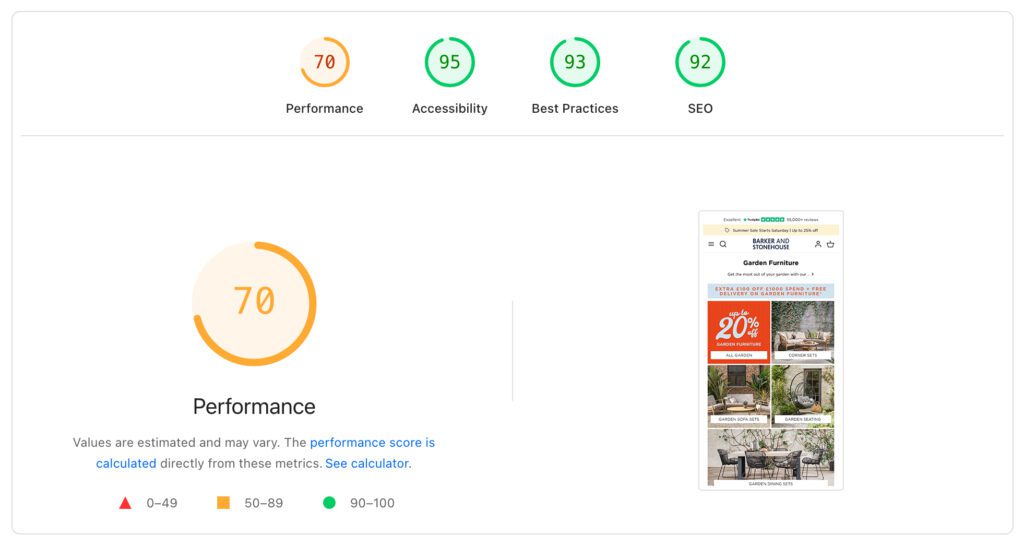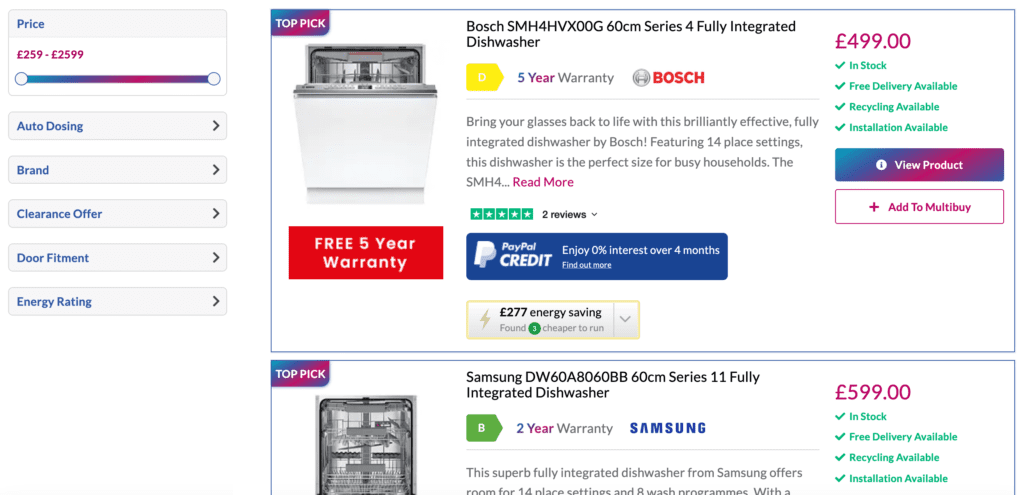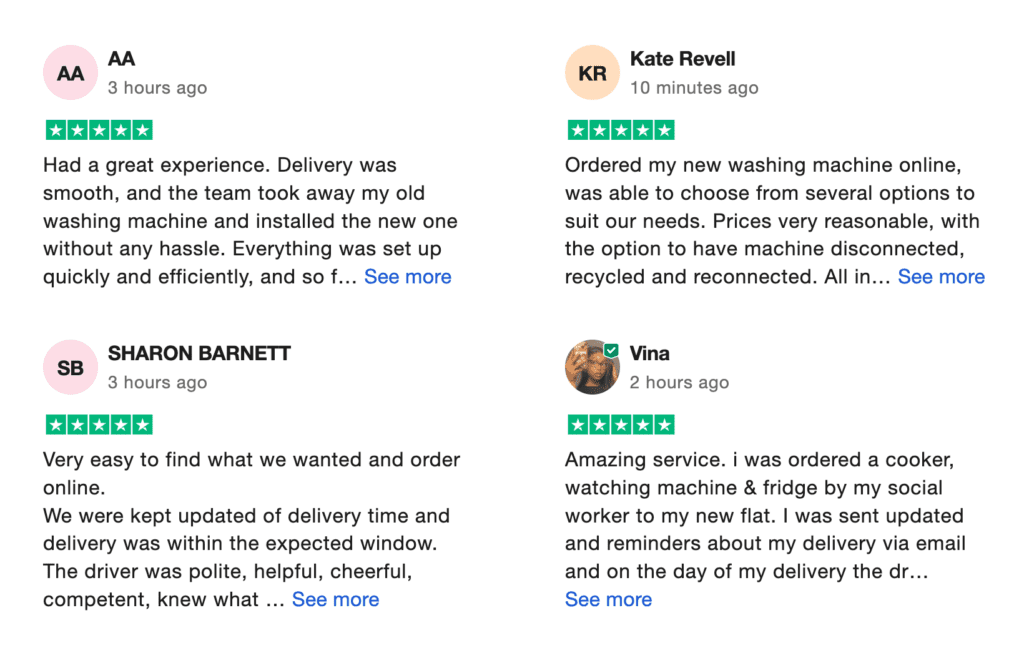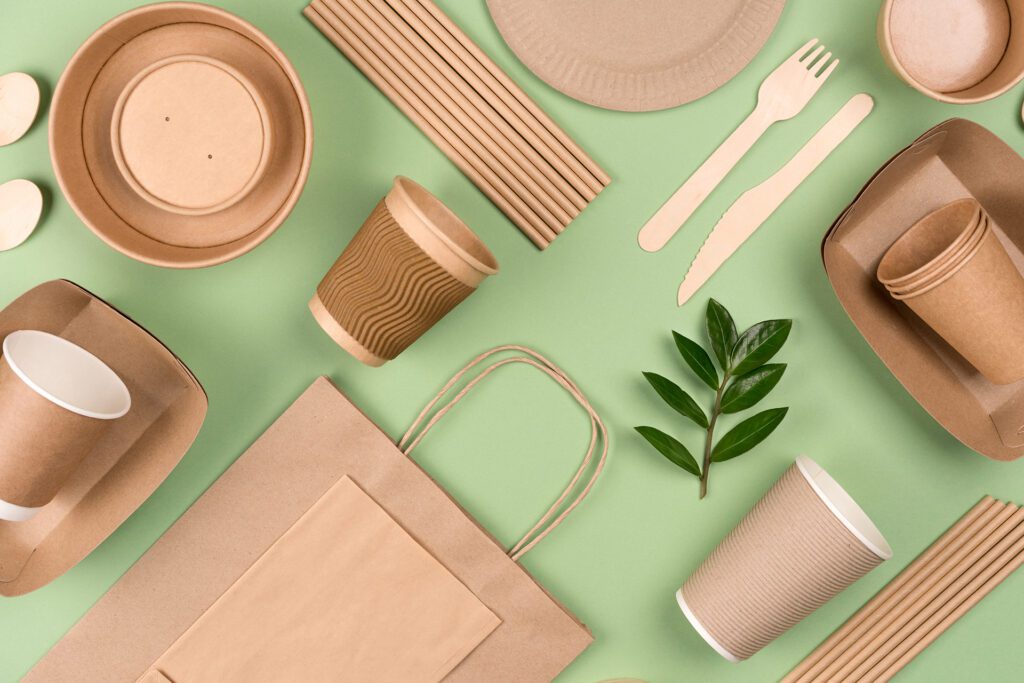With big-name retailers, lifestyle influencers, and digital-first startups all competing for attention in the home and garden industry online, it is no longer enough to have a site that just looks “nice.”
During the pandemic, thousands of UK businesses moved their services and shops online for the first time, knowing it was the only way to survive those turbulent times. Today, about 27% of online purchases in the UK are for home accessories, gardening products, and furniture, and the sector continues to grow steadily year on year. If you're not keeping up digitally, you're falling behind.
Whether you sell made-to-measure kitchens, design outdoor spaces, or run a garden centre, your online presence has to work harder than ever. But what do customers expect from a home living website in 2025?

As a customer yourself, you’ll know that people are browsing more on mobile than ever before. In fact, around 70% of visits to home and garden websites now come from phones (though desktop is still important).
When we shop online, we compare multiple businesses and products in a single session, switching between sites, tabs, devices and social media. We demand an easy-to-use experience from every site we encounter, ditching those we find frustrating, too expensive, dodgy-looking or uninformative.
We want fast-loading pages, a clean and modern design, with simple, intuitive navigation. We expect to see high-quality images, useful content, and enough information to help us make an informed decision.
Today’s customer is less patient but also more informed. We’re not browsing, we’re shortlisting.
So how do you give the customer everything they need, and ensure your business stays in the running?
The first expectation is simple: the site needs to work, and it needs to work fast. If a page takes too long to load, most visitors simply won’t wait around, especially on mobile. Stats from a Shopify study state that if a site has a four-second load time, bounce rates hit 24%, and at five seconds, they jump to 38% – that’s over a third of potential customers lost.
In addition, over 70% of customers say that page speed impacts their willingness to buy from an online retailer, so even the tiniest lag could have damaging effects.
To meet these expectations, you need to regularly investigate your website’s speed and performance, not just once in a blue moon - that's because every update, new content or new technology addition could impact your site's performance.
Start by running tests with tools like Google PageSpeed Insights or GTmetrix to identify bottlenecks and track Core Web Vitals (key metrics that measure loading speed, interactivity, and visual stability).

Talk to your developers or hosting provider about the speed and reliability of your server. Sometimes, slow loading times come from outdated hosting or insufficient resources, so upgrading your hosting plan or switching to a faster provider can make a significant difference.
Another effective strategy is to invest in a Content Delivery Network (CDN) to cache your site’s content on servers around the world. This allows it to be delivered to users from their closest server, which can drastically reduce load times.
And there’s another key thing to keep in mind, especially for home and garden businesses: seasonality. Traffic can spike dramatically during peak times, whether it’s Black Friday, the run-up to Christmas, or the first months of spring when everyone suddenly decides to revamp their home and garden. Being prepared for these moments matters, as they can make a massive difference to your revenue. So it’s worth asking: is your hosting ready for the surge? Can your server handle the pressure when demand is at its highest?
If your website slows down just when more people start visiting, you risk losing the very customers you’ve worked hard to attract. Off-peak is the time to stress-test your setup, NOT in the middle of your busiest season.
75% of online shoppers rely on product photos to make purchasing decisions, and high-quality product photos have double(!) the conversion rate of low-quality photos. So whether you’re selling a luxury sofa or a £5 houseplant, visuals clearly matter.
People want to see what they’re getting. They want to know the scale and the texture, and understand the kind of lifestyle context that only comes with good photography.

While smaller brands can get by with DIY photography, they’re ultimately competing with businesses that have invested in a professional photographer – a difference that most customers will definitely notice. That said, there are still techniques and features that businesses of all sizes should be employing, regardless of budget, for example:
Remember – great visuals don’t just help you sell, they also massively support decision-making, help reduce returns, and can really set you apart from the competition.
To say that home and garden purchases are very research-heavy would be an understatement. Your customers are searching for ideas, comparing styles, and planning months ahead, not just in peak season. As such, your website needs to meet them in that research phase, not just when they’re ready to buy.
And that’s more important than ever now that search is changing. With AI-generated overviews starting to appear in Google results, your content has to work harder to be seen. If your articles, guides or FAQs aren’t clear, helpful or well-structured, you risk being left out of those summaries entirely.
To stay visible and relevant, focus on a range of content types that support discovery, decision-making, building trust and your brand, such as:

If you're going to host this sort of content, your website needs to be built to support it. That could mean flexible content blocks in your CMS, pages built with video in mind, or dedicated spaces for things like inspiration galleries, reviews or planning tools.
A well-designed site doesn't just look good; it also makes creating, publishing and updating a variety of content easy, so your team can respond quickly to trends, questions or seasonal opportunities.
It doesn’t matter how fantastic your products are if people can’t find what they’re looking for. A strong user experience will help hand-hold your customers from interest to a sale, quickly and intuitively.
Here are a few ways to help your customers navigate their way around your site:

Customers need to know if they can trust you – that’s where clear, visible trust signals come in. These come in many forms, some more subtle than others.

Remember that trust isn't any single thing on your website; it's something that is communicated through many points along the journey, and in a competitive market, it can often be the deciding factor between you and the next brand in your customers’ tabs.
Customer expectations never stay still; the constant stream of technological shifts and cultural trends is continually reshaping how people discover, research and buy home and garden products. Here are four key changes we see influencing website design and digital strategy this year:
Customers pretty much expect websites to feel a little more tailored to them these days. That means showing relevant product recommendations based on browsing history or purchase behaviour, presonalised email marketing offering content aligned with their interests, and even localising offers or stock availability based on location. Personalisation can improve conversion rates, but it also improves the overall user experience. Even something as simple as remembering a customer’s name or previous searches can make your site feel smarter and more helpful.
Shoppers are more conscious than ever about what they buy, where it comes from, and what impact it has. These things shouldn’t feel tacked on; they should feel integral to the design and values of your brand and website.
In the home and garden space, there are a few things you might want to consider:

AI is changing the whole internet landscape, and in 2025, the average website search bar might not cut it. Search and filtering tools are becoming more AI-driven – offering dynamic filters, predictive search, and even chat-style product finders that guide users to the right option. For stores with a wide range of SKUs, such as seed merchants, furniture shops or home appliance brands, this can dramatically reduce friction and improve the path to purchase. AI is making the customer experience far more personalised, helping to cut frustration and the time to conversion, dramatically.

The line between website, social and offline shopping continues to blur. Customers might spend hours ( or weeks / months / years) researching a shed, sofa or kitchen online, following a brand on social media, then visiting a physical showroom, or calling to ask a question before they even consider buying. Your website needs to support that blended journey. That could mean offering online booking for in-store consultations, or even letting users "favourite" products to revisit later in person. Even if the final purchase happens offline (e.g. in a store), the research and decision-making almost always begins online.
At the end of the day, your website isn’t just a digital storefront anymore. It’s where your customers get to know you, trust you, and decide if you’re the right fit for their home and garden needs. In 2025, that means your site needs to be quick, clear, helpful, and a little more personalised.
Customers want to find what they’re looking for without frustration. They want to be inspired and informed, not overwhelmed. And they want to feel confident that when they buy from you, they’re making the right choice.
There’s a lot to keep up with, from fast loading times and beautiful visuals, to smart search tools and sustainable values, and that can feel overwhelming. So, take a step back, look at your site through your customers’ eyes, and think about how you can make their journey smoother, faster, and more enjoyable.
Because when your website works for your customers, it works for your business, today, tomorrow, and beyond.
My name’s Pete and I’ve been a designer for over 20 years, creating for web, print and more. I’ve written plenty of blog posts on the importance of good design, UX and creative content over the years. My other passions include walking in the Peaks, illustration and reading.
Sign up to The Digital Maze Newsletter